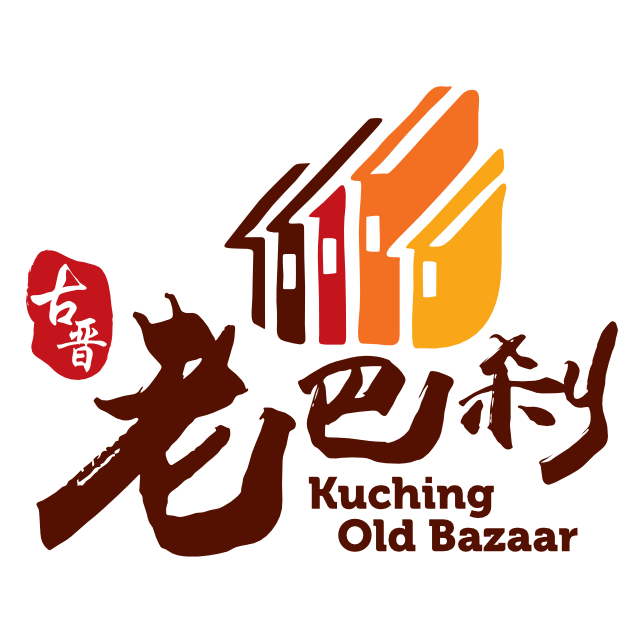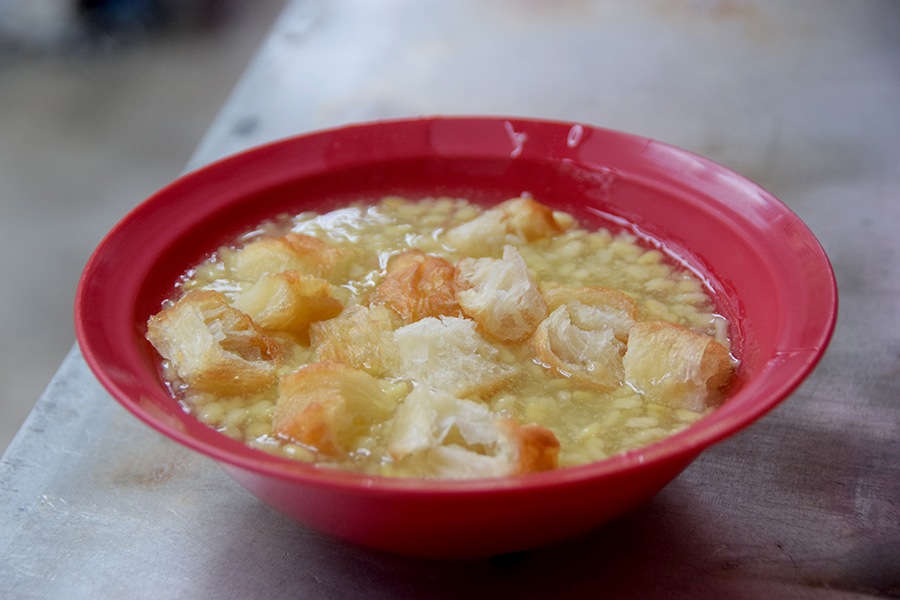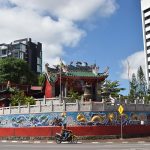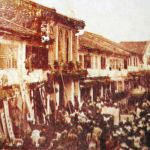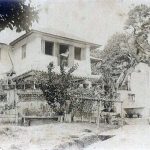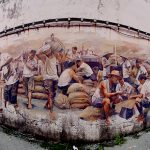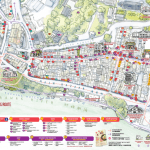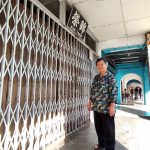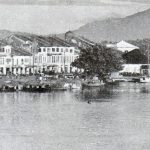Writer: Yit Ping
Translator: Kairos Wong
Lek tau suan is a Teochew mung bean dessert, a sweet and syrupy relief from the tropical heat. While “lek tau” translates to “mung beans”, the etymology of “suan” is debated. Some attribute it to the resemblance of split mung beans to cloves of garlic (pronounced “suàn” in Chinese), while others say it derives from a Teochew word meaning “to stir or mix evenly”.
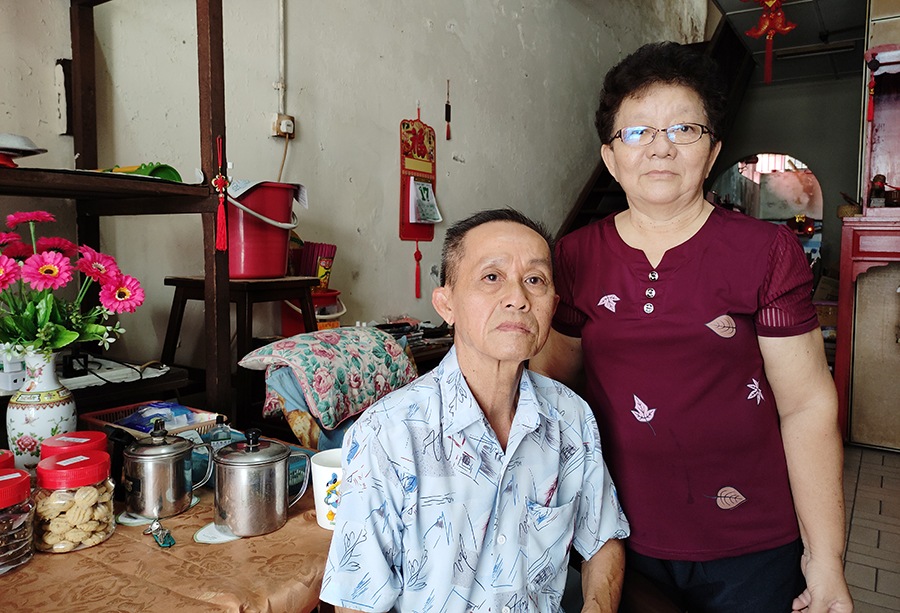
For a taste of authentic, old-timey lek tau suan, head down Upper China Street to the stall run by an old Teochew couple, Mr. and Mrs. Kho.
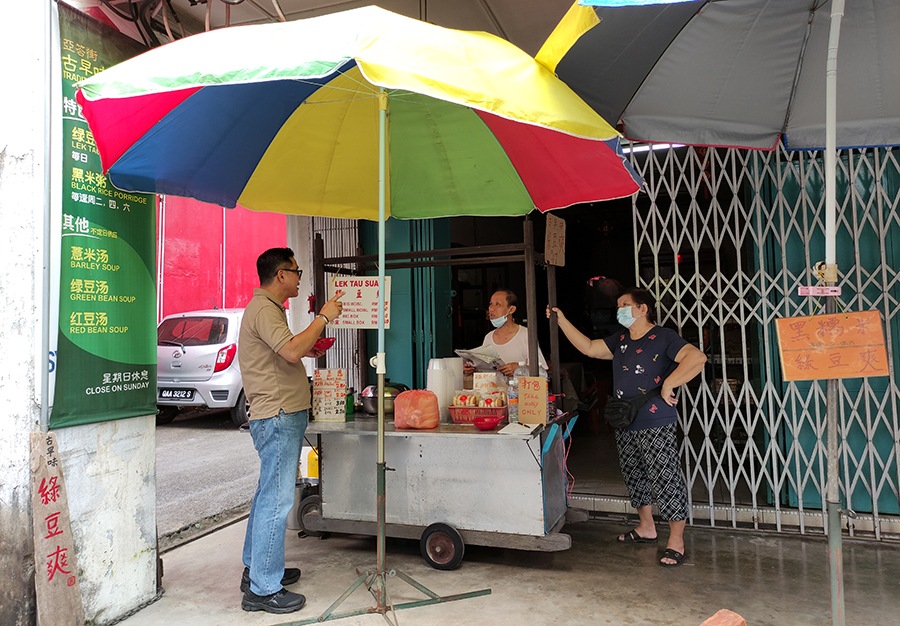
Mr. Kho was born in 1949 at No. 49, Upper China Street. His father Kho Hui Deng (许灰段) was a vendor and used to go around the Old Bazaar with a shoulder yoke selling almond tea and snacks. In the ‘60s, he acquired a cart and set up a stall at the Gambier Street market. When Kho Hui Deng abruptly passed away at the age of 55, his wife Tan Siok Tiong (陈淑珍) took over the business, selling herbal tea instead of almond tea.
“I came out to work when I was 14. I was young and didn’t see a future in being a vendor, so I wanted to go out and learn a trade. I worked at a noodle stall, a biscuit shop, a sundry shop and an electronics store,” Mr. Kho recalls.
Life of a Vendor
As the only child, Mr. Kho was expected by his aging mother to carry on the family business. Reluctantly, he agreed to run the stall on Sundays. The business proved unexpectedly successful and he grew in both confidence and passion for the job. Eventually, he took over the stall and his mother stayed at home to make kuihs for sale.
He recalls that his mother’s huat kueh (“prosperity cakes”) and keh neng ko (steamed egg cupcakes) were very popular, especially around Chinese New Year and other festivals. His favourite was the peng tor (“rice peach”, also called peng kueh or bee pau bee) that his mother only made for Chinese festivals.
At 29, Mr. Kho married Mdm. Sim. She became a valuable helper in the family, but a major surgery once rendered her unable to work for half a year. They had to forgo homemade kuehs and focus on selling herbal tea and pastries.
Meanwhile, Mr. Kho kept his nose to the grindstone. After a day’s work at the Gambier Street market he would move to Lau Ya Keng (Hiang Thian Siang Ti Temple) in the evening and set up the stall there. The Kuching Old Bazaar’s bustling nightlife, fuelled by clubs and bars, was good for business.
The risks of living in a rented space weighed on his mind, and he eventually bought a row house. He decided, however, to let out the house and continue living in the rented shophouse in the Old Bazaar. It was, after all, where his life and his means of living were.
His fears proved to be true when, in the 1990s, the shophouse rent soared from RM80 to RM1200. He sold the row house and took out a loan to buy the shophouse where he had lived for most of his life.
“Who could’ve known – after buying the shop the business went downhill. I had to pay for the house, for the car, for my child to go to university. All I could do was work and work even when it was bad for my health. I couldn’t let my mother know as I didn’t want her to worry. I worked every day of the year, except for Shen Dan (神诞, a festival celebrating the birthday of a folk deity) and Chinese New Year. But even when my body rested my mind’s never at rest, always worrying about money.”
Mr. Kho’s mother did notice her son’s plight and suggested the idea of selling lek tau suan. In 1998, Mr. Kho’s signature lek tau suan hit the streets. Each morning around 6 a.m. he would push a cart to Carpenter Street to sell lek tau suan. After a quick lunch at home he would set out again with a different cart to sell herbal tea and pastries at the Gambier Street market. As dusk falls, he would hurry to Lau Ya Keng and run the stall there until late night.
The incessant working took its toll. Mr. Kho fell seriously ill at the age of 54. Poor health and the rising cost of herbal tea ingredients led to the decision to end the herbal tea business. At one point as frail as 38 kg, Mr. Kho still insisted on pushing the cart to sell lek tau suan on Carpenter Street.
A year later, his mother passed away at the age of 85. “She was the one who taught me to make lek tau suan,” says Mrs. Kho with a tear in her eye. “The year she passed, our child graduated from university, we finished paying the shophouse loan, his (Mr. Kho) health was improving. It’s as if she made sure everything was all right before she left.”
In 2019, the couple decided to move the stall into the five-foot way of their own shophouse. “We’re old now and can’t keep pushing the cart in and out every day. But old customers and tourists still come all the way here to Upper China Street for a bowl of our lek tau suan.”
A Complicated Craft
Mr. Kho beams with pride when talking about his signature lek tau suan. “Our ingredients are different. We use sweet potato starch, which has to be rinsed, whitened, and strained, usually repeated over several days. We cook 3 kg of mung beans in a batch. They are soaked for three to four hours, steamed for an hour, then left to cool overnight.
“Pandan leaves are simmered for two to three hours to extract the flavours. The liquid is strained, sugar and sweet potato starch are added, then the steamed mung beans are poured in. It still takes us three hours every morning to get everything ready for business.”
A good lek tau suan hinges on the delicate balance of ingredients, which in turn relies on experience and skill. In addition, lek tau suan must be paired with traditional you tiao, Mr. Kho says, to balance sweet with savory.
“We started selling black rice porridge pretty late. An old Teochew taught it to us. Later I combined black rice porridge with lek tau suan to make cham (Teochew for “mixed”), which the young people like.”
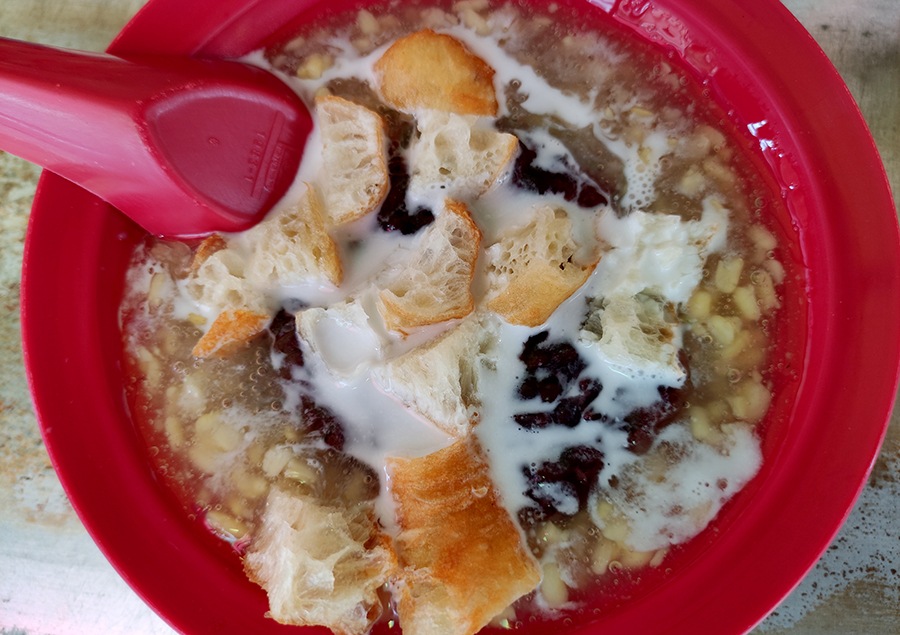
“Traditional lek tau suan is a complicated craft, and the money earned is not proportionate to the time spent. It’s understandable that young people don’t want to pick up the trade,” Mr. Kho muses. “Still, it’s a shame to think one day us Teochews won’t get to eat our own traditional Teochew food.”
For 72 years Mr. Kho has lived in the Old Bazaar. Like a bowl of lek tau suan, his memories of the Old Bazaar contain untold depths, the work of patient time.
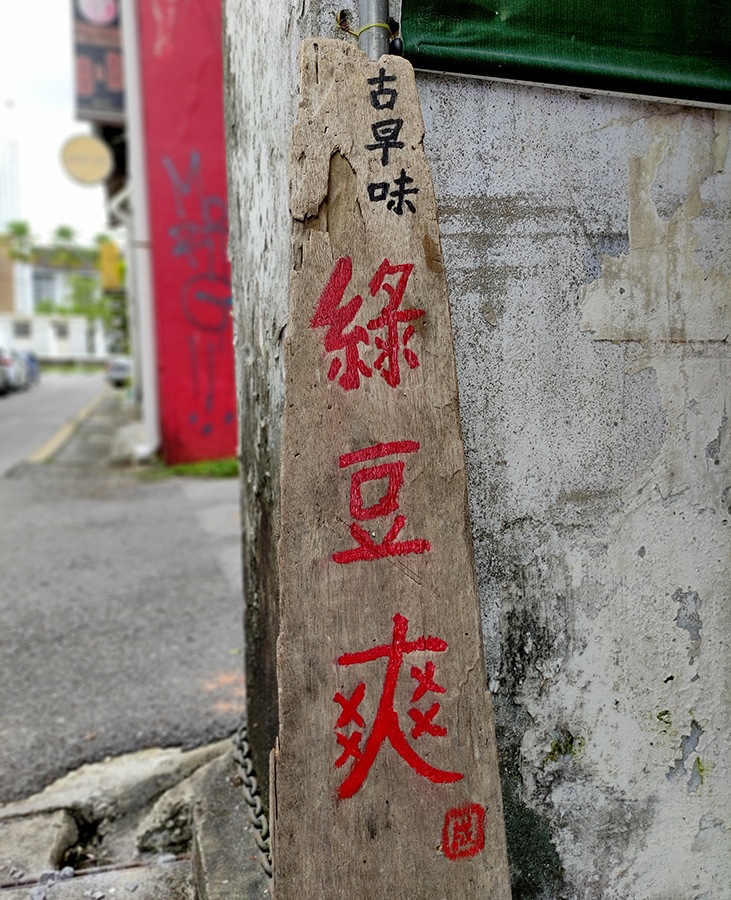

Bachelor of Mass Communication (Hons), used to be a journalist and feature writer, love reading, books, and old stories.
